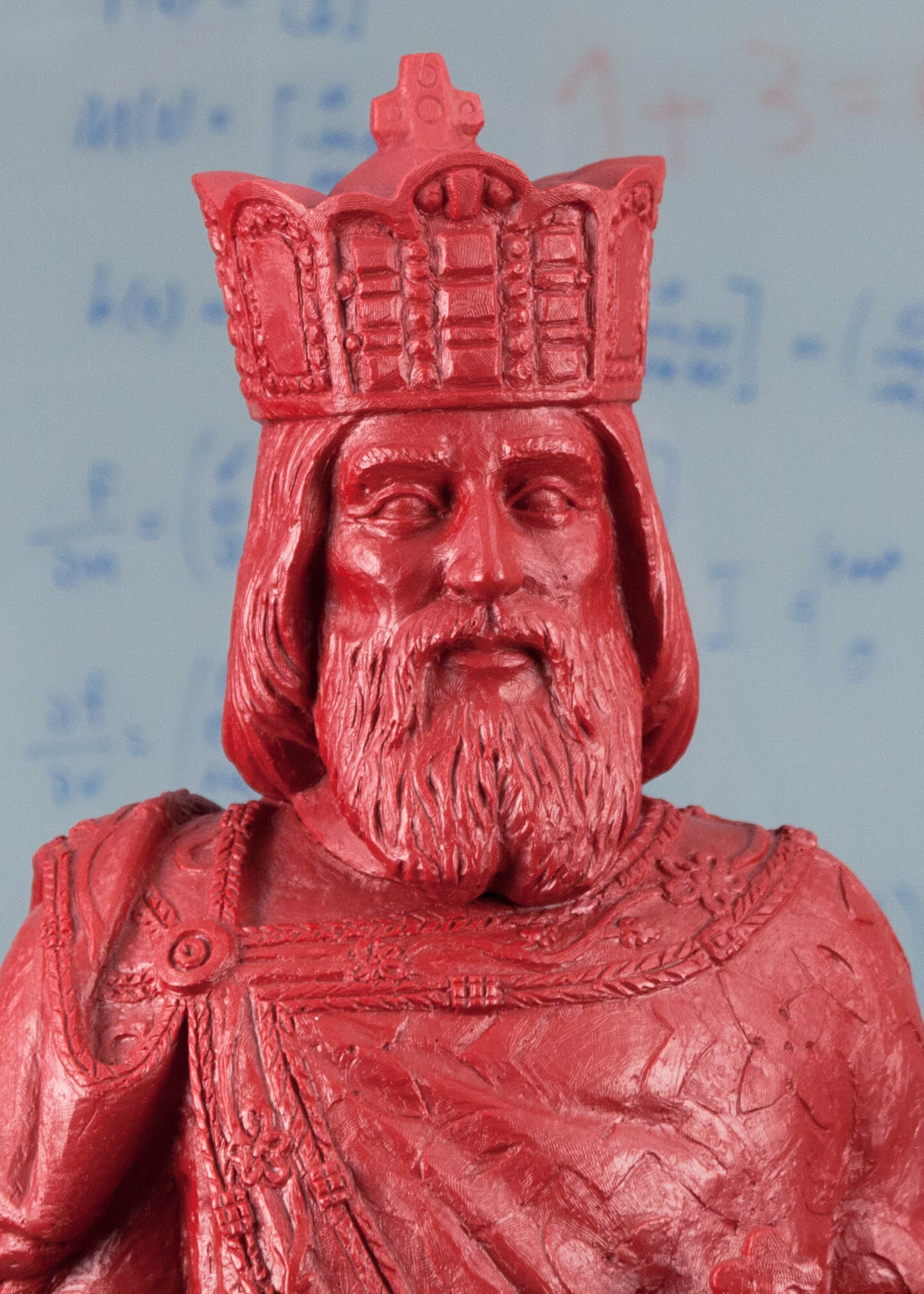Profile

|
Publications
A Primal-Dual Homotopy Algorithm for L1-Minimization with L-infinity-Constraints
In this paper we propose a primal-dual homotopy method for L1-minimization problems with infinity norm constraints in the context of sparse reconstruction. The natural homotopy parameter is the value of the bound for the constraints and we show that there exists a piecewise linear solution path with finitely many break points for the primal problem and a respective piecewise constant path for the dual problem. We show that by solving a small linear program, one can jump to the next primal break point and then, solving another small linear program, a new optimal dual solution is calculated which enables the next such jump in the subsequent iteration. Using a theorem of the alternative, we show that the method never gets stuck and indeed calculates the whole path in a finite number of steps. Numerical experiments demonstrate the effectiveness of our algorithm. In many cases, our method significantly outperforms commercial LP solvers; this is possible since our approach employs a sequence of considerably simpler auxiliary linear programs that can be solved efficiently with specialized active-set strategies.
Matlab-Code and test instances for our method can be found below.
@article{BrauerLorenzTillmann2018,
author = {C. Brauer and D. A. Lorenz and A. M. Tillmann},
title = {{A Primal-Dual Homotopy Algorithm for $\ell_1$-Minimization with $\ell_\infty$-Constraints}},
journal = {{Computational Optimization and Applications}},
volume = {70},
number = {2},
pages = {443--478},
note = {DOI:10.1007/s10589-018-9983-4},
year = {2018}
}
Solving Basis Pursuit: Heuristic Optimality Check and Solver Comparison
The problem of finding a minimum L1-norm solution to an underdetermined linear system is an important problem in compressed sensing, where it is also known as basis pursuit. We propose a heuristic optimality check as a general tool for L1-minimization, which often allows for early termination by “guessing” a primal-dual optimal pair based on an approximate support. Moreover, we provide an extensive numerical comparison of various state-of-the-art L1-solvers that have been proposed during the last decade, on a large test set with a variety of explicitly given matrices and several right-hand sides per matrix reflecting different levels of solution difficulty. The results, as well as improvements by the proposed heuristic optimality check, are analyzed in detail to provide an answer to the question which algorithm is the best.
Accompanying software to be found below:
- HOC-Suite - Matlab package containing code for Heuristic Optimality Checks (HOCs) for Basis Pursuit, Basis Pursuit Denoising, and L1-Regularized Least-Squares. HOC can improve speed and accuracy of existing solvers for these problems (see README file for details, and results in the paper, along with the HOC Demo for BP). (Version 1.0 of 09/30/2013).
- ISAL1 - Matlab implementation of the Infeasible-Point Subgradient Algorithm for Basis Pursuit; also includes prototype code (ISAL1bpdn) for BP Denoising. (Version 1.00 of 09/30/2013 – current release; the paper used Version 0.91 of 10/08/2012).
- L1-Testset - The testset we used for our L1-solver comparison as ascii- or Matlab binary files, accompanied by Matlab routines for data handling. (Size of zip-files: 313MB (ascii), 1GB (mat))
@article{LorenzPfetschTillmann2015,
author = {D. A. Lorenz and M. E. Pfetsch and A. M. Tillmann},
title = {{Solving Basis Pursuit: Heuristic Optimality Check and Solver Comparison}},
journal = {{ACM Transactions on Mathematical Software}},
volume = {41},
number = {2},
pages = {Art. No. 8},
year = {2015},
note = {DOI: 10.1145/2689662}
}
An Infeasible-Point Subgradient Method Using Adaptive Approximate Projections
We propose a new subgradient method for the minimization of nonsmooth convex functions over a convex set. To speed up computations we use adaptive approximate projections only requiring to move within a certain distance of the exact projections (which decreases in the course of the algorithm). In particular, the iterates in our method can be infeasible throughout the whole procedure. Nevertheless, we provide conditions which ensure convergence to an optimal feasible point under suitable assumptions. One convergence result deals with step size sequences that are fixed a priori. Two other results handle dynamic Polyak-type step sizes depending on a lower or upper estimate of the optimal objective function value, respectively. Additionally, we briefly sketch two applications: Optimization with convex chance constraints, and finding the minimum L1-norm solution to an underdetermined linear system, an important problem in Compressed Sensing.
@article{LorenzPfetschTillmann2014,
author = {D. A. Lorenz and M. E. Pfetsch and A. M. Tillmann},
title = {{An infeasible-point subgradient method using adaptive approximate projections}},
journal = {{Computational Optimization and Applications}},
volume = {57},
number = {2},
pages = {271--306},
year = {2014},
note = {DOI: 10.1007/s10589-013-9602-3}
}
Visualization of Astronomical Nebulae via Distributed Multi-GPU Compressed Sensing Tomography
The 3D visualization of astronomical nebulae is a challenging problem since only a single 2D projection is observable from our fixed vantage point on Earth. We attempt to generate plausible and realistic looking volumetric visualizations via a tomographic approach that exploits the spherical or axial symmetry prevalent in some relevant types of nebulae. Different types of symmetry can be implemented by using different randomized distributions of virtual cameras. Our approach is based on an iterative compressed sensing reconstruction algorithm that we extend with support for position-dependent volumetric regularization and linear equality constraints. We present a distributed multi-GPU implementation that is capable of reconstructing high-resolution datasets from arbitrary projections. Its robustness and scalability are demonstrated for astronomical imagery from the Hubble Space Telescope. The resulting volumetric data is visualized using direct volume rendering. Compared to previous approaches, our method preserves a much higher amount of detail and visual variety in the 3D visualization, especially for objects with only approximate symmetry.
@article{WengerAmentGutheLorenzTillmannWeiskopfMagnor2012,
author = {S. Wenger and M. Ament and S. Guthe and D. A. Lorenz and A. M. Tillmann and D. Weiskopf and M. Magnor},
title = {{Visualization of Astronomical Nebulae via Distributed Multi-GPU Compressed Sensing Tomography}},
journal = {{IEEE Transactions on Visualization and Computer Graphics}},
volume = {18},
number = {12},
pages = {2188--2197},
year = {2012},
note = {DOI: 10.1109/TVCG.2012.281}
}

